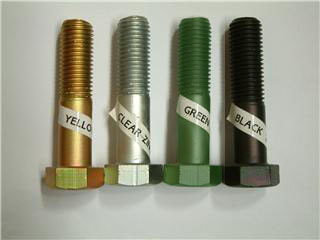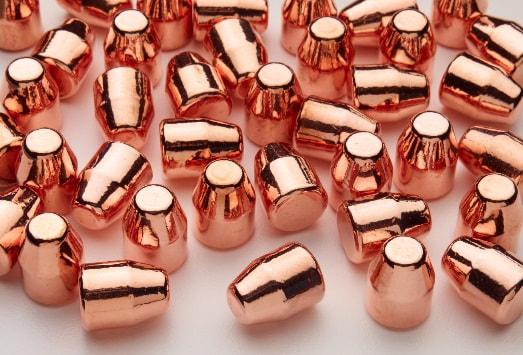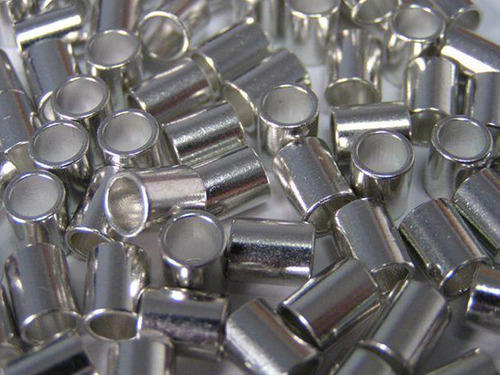Our automated zinc barrel line delivers consistent results at an efficient pace. This allows us to provide the highest quality levels while meeting even the most demanding delivery schedules.
|
Zinc Plating
The zinc plating process offers several advantages including an increase in corrosion resistance (comparable to cadmium) which can be increased with chromates and sealers. This prolongs the life of the base metal and can improve the aesthetic of the part. Zinc also serves as a good paint base. In addition, zinc plating increases lubricity and can be used for identification purposes when combined with chromates and dyes.
Things to note:
|
Copper Plating
Copper offers many benefits. It is a soft and malleable metal, making it an excellent choice for electroplating with other flexible metal materials or objects. Copper won't separate from other metals even when it is bent. Copper's excellent conductive properties makes it more effective than other materials for use with electrical components, which is the reason copper electroplating is widely used in the electronics industry. When used as a base coat for nickel steel plating, electroplated copper provides superior protection against corrosion in comparison to other materials.
|
|
Nickel Plating
Nickel plating baths can deposit both bright and semi-bright nickel. Bright nickel is typically used for decorative purposes and corrosion protection while semi-bright deposits are used for engineering nickel where a high luster is not required.
Bright nickel is deposits are mirror bright and have a smooth finish as well as excellent corrosion resistance. Nickel is commonly used as intermediate deposit and it is applied in contacts and connectors. Dull nickel offers the same corrosion protection and wear resistance without the high luster. |
|
Silver Plating
Silver plating is an electrolytic process whereby pure silver is deposited onto a metal part. Generally this if for the purpose of enhanced electrical conductivity however there are a number of functional reasons to use silver plating.
Silver is an extremely ductile metal with a brilliant white luster. It has the highest electrical and thermal conductivity of all metals as well as the highest optical reflectivity in the visible range. Silver offers excellent high-temperature lubricity making it an excellent coating for anti-galling and anti-seizing applications on high temperature nuts and bearing surfaces with service temperatures up to 1200F. 99.9% pure, matte silver offers excellent solderability. |
Gold PlatingGold offers a number of benefits beyond visual appeal because of it's properties and characteristics.
Gold can provide exceptional corrosion protection because it is less susceptible to oxidation. This is part of the reason that gold has enhanced electrical condictivity. Gold also enhances durability because it is not susceptible to fretting or damage from excessive heat. All of this makes gold an excellent finish for electrical contacts. Gold is also well suited for medical devices as it is non-hazardous to the body. It has a natural resistance to bacteria and germs and can withstand many cycles in an autoclave. |
Tin PlatingTin has good conductivity and excellent solderability. It is also not easily oxidized and so offers a level of corrosion resistance as well. It is often used to provide shielding over other more reactive metals such as copper. Tin electroplating affords a lot of the same qualities as gold and silver plating but at a lower cost.
|







